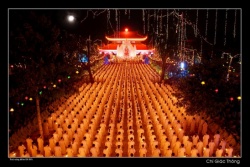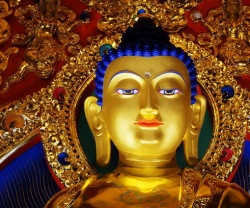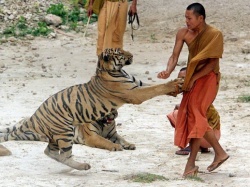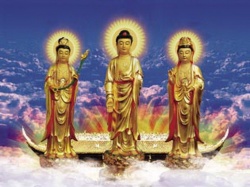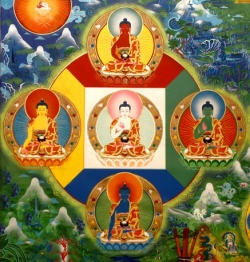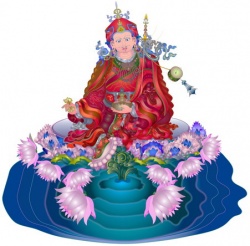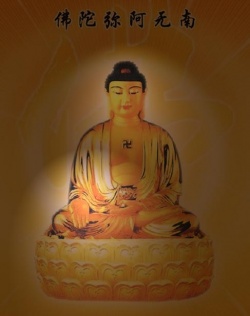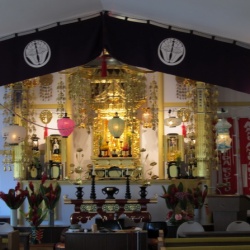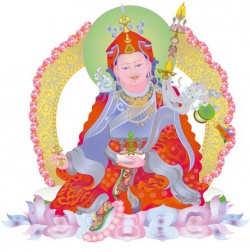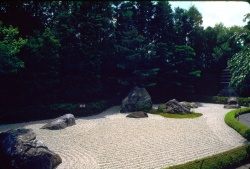Difference between revisions of "Sōhei"
(Created page with "thumb|250px|The sōhei Benkei with Minamoto no Yoshitsune Sōhei (僧兵 lit. "monk warriors";?, fighting monks) were Buddhist warrior monk...") |
|||
| (8 intermediate revisions by 2 users not shown) | |||
| Line 1: | Line 1: | ||
| − | [[File:Yoshitsune_with_benkei.jpg|thumb|250px|The sōhei Benkei with Minamoto no Yoshitsune]] | + | [[File:Yoshitsune_with_benkei.jpg|thumb|250px|The sōhei Benkei with Minamoto no Yoshitsune]]<nomobile>{{DisplayImages|3207|1955|2521|1708|3174|1313|4018|3193|231|3626}}</nomobile> |
| − | |||
| − | |||
| − | |||
| − | The sōhei shared many similarities with the Western lay brothers, members of a monastic order who might not have been ordained. Much like warrior monks of Germany (see Teutonic Knights), or other religious orders, such as those involved in the Crusades, sōhei did not operate as individuals, or even as members of small, individual temples, but rather as warriors in a large extended brotherhood or monastic order. The 'home temple' of a sōhei monastic order might have had several, if not tens or a hundred, smaller monasteries, training halls, and subordinate temples. | + | |
| + | |||
| + | [[Sōhei]] ([[僧兵]] lit. "[[monk warriors]]";?, [[fighting monks]]) were [[Buddhist warrior monks]] of [[Wikipedia:Feudalism|feudal]] [[Japan]]. | ||
| + | |||
| + | At certain points of history they held considerable power, obliging the {{Wiki|imperial}} and {{Wiki|military}} governments to collaborate. | ||
| + | |||
| + | The prominence of the [[sōhei]] rose in parallel with the ascendancy of the [[Tendai]] school's influence between the 10th and 17th centuries. | ||
| + | |||
| + | The [[warriors]] protected land and intimidated rival [[schools of Buddhism]], becoming a significant factor in the spread of [[Buddhism]] and the [[development]] of different schools during the [[Kamakura period]]. | ||
| + | |||
| + | |||
| + | They were similar to the mountain [[ascetic]] [[yamabushi]] [[warrior monks]], but unlike the {{Wiki|solitary}} [[yamabushi]], [[sōhei]] generally organized into large armies or mobs. | ||
| + | |||
| + | A famous [[monastery]] is the [[Enryaku-ji]] on [[Mount Hiei]], just outside {{Wiki|Kyoto}}. | ||
| + | |||
| + | |||
| + | The [[sōhei]] shared many similarities with the {{Wiki|Western}} lay brothers, members of a [[monastic order]] who might not have been [[ordained]]. | ||
| + | |||
| + | Much like [[warrior monks]] of {{Wiki|Germany}} (see {{Wiki|Teutonic}} Knights), or other [[religious]] orders, such as those involved in the Crusades, [[sōhei]] did not operate as {{Wiki|individuals}}, or even as members of small, {{Wiki|individual}} [[temples]], but rather as [[warriors]] in a large extended brotherhood or [[monastic order]]. | ||
| + | |||
| + | The '[[home temple]]' of a [[sōhei monastic order]] might have had several, if not tens or a hundred, smaller [[monasteries]], {{Wiki|training}} halls, and subordinate [[temples]]. | ||
== History == | == History == | ||
=== Founding and feuds === | === Founding and feuds === | ||
| − | Warrior monks first appeared during the Heian period, when bitter political feuds began between different temples, different sub-sects of Buddhism, over imperial appointments to the top temple positions (abbot, or zasu) | + | [[Warrior monks]] first appeared during the [[Heian period]], when [[bitter]] {{Wiki|political}} feuds began between different [[temples]], different sub-sects of [[Buddhism]], over {{Wiki|imperial}} appointments to the top [[temple]] positions ([[abbot]], or [[zasu]]). |
| − | + | Much of the fighting over the next four centuries was over these sorts of {{Wiki|political}} feuds, and centered around the [[temples]] of {{Wiki|Kyoto}}, [[Nara]], and [[Ōmi]], namely the [[Tōdai-ji]], [[Kōfuku-ji]], [[Enryaku-ji]], and [[Mii-dera]], the four largest [[temples]] in the country. | |
| − | |||
| − | + | The first armed conflict broke out in 949, when 56 [[monks]] from [[Tōdai-ji]] staged a protest at the residence of a {{Wiki|Kyoto}} official, over an appointment that displeased them. | |
| − | + | Protests of this sort continued through the tenth century, often breaking out into brawls in which some participants would be killed. | |
| − | + | In 970, following a dispute between [[Enryaku-ji]] and the [[Yasaka]] [[Shrine]] of {{Wiki|Kyoto}}, the former established the first [[standing]] {{Wiki|army}} of [[warrior monks]]. | |
| − | + | It is not entirely clear whether or not this [[standing]] {{Wiki|army}} consisted of [[monks]] from [[Enryaku-ji]], or were more like mercenaries, since [[Ryōgen]], the [[abbot]] who established this {{Wiki|army}}, | |
| + | also established a code of [[monastic]] conduct that prevented [[monks]] from leaving [[Mount Hiei]] during their twelve-year {{Wiki|training}}, from covering their faces, and from carrying [[weapons]]. | ||
| − | |||
| − | + | Beginning in 981, there were a number of armed conflicts between [[Enryaku-ji]] and [[Mii-dera]], each the head [[temple]] of a different sub-sect of [[Tendai Buddhism]]. | |
| − | + | These [[disputes]] were, as before, over {{Wiki|political}} appointments, and dishonorable {{Wiki|etiquette}}. | |
| − | + | More often than not, these were cases of members of one faction being chosen as the [[abbot]] of the other faction's [[temple]], and the [[monks]] would protest. | |
| − | + | This continued, on and off, once stopping for as long as 40 years, through the eleventh and into the twelfth century. | |
| − | + | The armies became larger, and the [[violence]] increased, until in 1121 and 1141 [[Mii-dera]] was burned to the ground by [[monks]] from [[Enryaku-ji]]. | |
| − | + | Other [[temples]] became embroiled in the conflicts as well, and [[Enryaku-ji]] and [[Mii-dera]] united against [[Kōfuku-ji]], and, another [[time]], against [[Kiyomizu-dera]]. | |
| − | |||
| − | === | + | === The [[Genpei War]] === |
| − | + | At the end of the twelfth century, [[Japan]] was plunged into the [[Genpei]] [[War]], a civil [[war]]. | |
| − | + | While the feuds between the [[temples]] did not end, they became submerged in larger events. | |
| − | The sōhei employed a variety of weapons. The obi, or belt, of the kimono would often be supplemented with a heavier sash, so a sword could be slung from it. The tachi style of sword was probably the most common, though many monks may have carried tantō as well. Many monks were also accomplished archers, and used bamboo-and-rattan bows, called daikyū, with bamboo arrows. The most traditional weapon of the monk, however, was the naginata, a weapon much like the European glaive or halberd. The sōhei were also trained to use the heavy kanabō, which was a large staff or club forged of solid iron. Although deadly, this weapon was generally used to defeat an opponent without bloodshed. | + | The warring [[Minamoto]] and [[Taira]] {{Wiki|clans}} both tried to obtain the aid of the [[warrior monks]] of Nara and {{Wiki|Kyoto}}, adding the [[temples]]' forces to the {{Wiki|clans}}' already mighty armies of [[samurai]]. |
| + | |||
| + | [[Taira no Kiyomori]] sent generous gifts of {{Wiki|rice}} and {{Wiki|silk}} to [[Enryakuji]], ensuring they would not help his enemies, the [[Minamoto]], who had allied themselves with the [[monks]] of [[Mii-dera]]. | ||
| + | |||
| + | In 1180, in one of the more famous battles in which [[sōhei]] participated, the [[monks]] of [[Mii-dera]], along with a force of [[Minamoto]] [[samurai]], tried to defend the bridge over the [[Uji]] [[River]], and the [[Byōdō-in]], a [[temple]] behind it, from an attacking [[Taira]] force (see [[Battle of Uji]] (1180)). | ||
| + | |||
| + | The [[monks]] pulled up the planks of the bridge, to impair the ability of the [[samurai]], on horseback, to cross. | ||
| + | |||
| + | They stood their ground with [[bow]] and arrow, [[naginata]], sword and [[dagger]], but were ultimately defeated. | ||
| + | |||
| + | However, despite their defeat, and simply for their defiance alone, [[Taira no Kiyomori]] ordered that revenge be taken upon the [[monks]] that opposed him. | ||
| + | |||
| + | [[Mii-dera]] was burned to the ground once again, as were many of the [[temples]] of [[Nara]]. Only the [[Enryaku-ji]] escaped unscathed. | ||
| + | |||
| + | |||
| + | Three years later, when [[Minamoto no Yoshinaka]] betrayed his {{Wiki|clan}} by storming into {{Wiki|Kyoto}}, setting the [[Hōjōji Palace]] aflame and kidnapping [[Emperor]] [[Go-Shirakawa]], he was opposed by many of the [[monks]] of {{Wiki|Kyoto}}, including those from [[Mount Hiei]]. | ||
| + | |||
| + | |||
| + | === Thirteenth–fourteenth centuries and the rise of [[Zen]] === | ||
| + | |||
| + | |||
| + | Following the [[Genpei]] [[War]], the [[monasteries]], to a large extent, turned their [[attention]] to rebuilding, first {{Wiki|physically}}, and then {{Wiki|politically}}. | ||
| + | |||
| + | Their {{Wiki|political}} influence grew stronger through [[peaceful]] means, and the [[warrior monks]] played only very minor roles in the [[wars]] of the thirteenth and fourteenth centuries. | ||
| + | |||
| + | [[Violent]] conflict between the [[temples]] still occurred on occasion, once again over {{Wiki|political}} and [[spiritual]] appointments, and related matters. | ||
| + | |||
| + | |||
| + | During the [[wars]] of the [[Nanboku-cho Period]], [[Mount Hiei]] took in the rebel [[Emperor]] [[Go-Daigo]], and [[offered]] him [[sanctuary]]. [[Emperor]] [[Go-Daigo]], along with his son, and the help of the [[sōhei]] of [[Mount Hiei]], launched a brief rebellion against the {{Wiki|Kamakura shogunate}}. | ||
| + | |||
| + | The [[Ashikaga]] [[shogunate]] took power shortly afterwards, and supported [[Zen]] over the other [[Buddhist]] sects, drawing the ire of the [[warrior monks]]. | ||
| + | |||
| + | Over the course of the 1340s-1360s a number of conflicts erupted between the [[Tendai sect]] [[temples]], and those of [[Zen]], especially [[Nanzen-ji]]. | ||
| + | |||
| + | |||
| + | |||
| + | === The [[Sengoku-jidai]] and the rise of the [[Ikkō-Ikki]] === | ||
| + | |||
| + | |||
| + | |||
| + | The {{Wiki|Ōnin War}}, starting in 1467, was the prelude to over a century of civil [[war]] in [[Japan]], and the {{Wiki|stimulus}} for a reorganization of the [[warrior monks]]. | ||
| + | |||
| + | Unlike the [[Jōkyū War]] and {{Wiki|Mongol}} invasions of the thirteenth century, the {{Wiki|Ōnin War}} was fought primarily in {{Wiki|Kyoto}}, and thus the [[warrior monks]] could no longer remain non-violent and [[neutral]]. | ||
| + | |||
| + | |||
| + | In addition, a new breed of [[warrior monks]] was forming in the countryside. Where the [[monks]] of [[Mount Hiei]] had subscribed to the teachings of the [[Tendai sect]], these new groups, calling themselves [[Ikkō-ikki]], followed the dictates of the [[Jōdo Shinshū sect]] of [[beliefs]]. | ||
| + | |||
| + | They were [[essentially]] coalitions of [[religious]] {{Wiki|fundamentalist}} {{Wiki|priests}}, {{Wiki|farmers}}, and families, who were willing to literally fight for their [[beliefs]]. | ||
| + | |||
| + | [[Ikkō-ikki]] translates to something like "[[devoted league]]," but also had the connotation of "[[single-minded riots]]." | ||
| + | |||
| + | In 1488, their leader [[Rennyo]], incited an uprising against [[samurai]] {{Wiki|rule}}, and secured [[Kaga]] Province for the [[Ikkō-ikki]]. | ||
| + | |||
| + | From there they spread, establishing themselves in [[Nagashima]], {{Wiki|Ishiyama Hongan-ji}}, and [[Mikawa]] Province. | ||
| + | |||
| + | Their growing power base would eventually attract the [[attention]] of warlords like {{Wiki|Oda Nobunaga}} and [[Tokugawa Ieyasu]], who [[recognized]] their [[opposition]] to [[samurai]] {{Wiki|rule}}, their [[determination]], their strength, and their numbers. | ||
| + | |||
| + | |||
| + | |||
| + | [[Tokugawa Ieyasu]] attacked the [[Ikkō-ikki]] of [[Mikawa]] in 1564, in the [[Battle of Azukizaka]], and failed to defeat them, but returned shortly afterwards with a contingent of [[warrior monks]] from his [[own]] [[religious]] [[sect]], | ||
| + | |||
| + | [[Jōdo shū]], and, after defeating the [[Ikkō]] {{Wiki|adherents}} in {{Wiki|battle}}, burned all their [[temples]] to the ground. | ||
| + | |||
| + | As {{Wiki|Oda Nobunaga}} rose to power at the end of the 1560s, the [[monks]] of [[Enryaku-ji]] regained their {{Wiki|military}} might, and fought a number of skirmishes in the streets of {{Wiki|Kyoto}} against a new rival [[sect]], [[Nichiren Buddhism]]. | ||
| + | |||
| + | They eventually burned all of Kyoto's [[Nichiren]] [[temples]] to the ground, and then sought allies among the local [[lords]], or [[daimyo]]. | ||
| + | |||
| + | Unfortunately for them, the [[Azai]] and [[Asakura]] {{Wiki|clans}} they allied with were enemies of {{Wiki|Oda Nobunaga}}. | ||
| + | |||
| + | Beginning on September 29, 1571, [[Nobunaga's]] {{Wiki|army}} of 30,000 attacked [[Mount Hiei]], destroying the [[Enryaku-ji]]. | ||
| + | |||
| + | Though it was rebuilt, the [[standing]] {{Wiki|army}} of [[warrior monks]] would never be reconstituted. | ||
| + | |||
| + | [[Nobunaga]] then moved on to fighting the [[Ikkō-ikki]] in their fortresses of [[Nagashima]] and {{Wiki|Ishiyama Hongan-ji}} (see Sieges of [[Nagashima]], Siege of {{Wiki|Ishiyama Hongan-ji}}). | ||
| + | |||
| + | In the summer of 1574, with the help of former pirate [[Kuki Yoshitaka]], [[Nobunaga]] [[essentially]] blockaded the [[Ikkō]] fortresses and starved them into submission. | ||
| + | |||
| + | The 20,000 inhabitants of the fortress went up in flames along with their home. | ||
| + | |||
| + | Two years later, [[Nobunaga]] returned to the {{Wiki|Ishiyama Hongan-ji}}, which he had failed to take earlier. | ||
| + | |||
| + | At the two Battles of [[Kizugawaguchi]], [[Nobunaga]] defeated his enemies, the [[Mōri]] {{Wiki|clan}}, who had naval control over the area. The [[Ikkō]] were finally forced to surrender in 1580. | ||
| + | |||
| + | |||
| + | In the 1580s and 1590s, various factions of [[warrior monks]] sided with either [[Tokugawa Ieyasu]] or his rival [[Toyotomi Hideyoshi]], fighting in a number of battles and skirmishes. | ||
| + | |||
| + | When [[Tokugawa Ieyasu]] finally defeated the last of his enemies and took control of the country in 1603, the [[time]] of the [[warrior monks]] finally came to an end. | ||
| + | |||
| + | |||
| + | === [[Weapons]] and dress === | ||
| + | |||
| + | |||
| + | [[Sōhei]] were quite varied in their armament. | ||
| + | |||
| + | The [[naginata]] is the weapon most often associated with them, though in legend as well as history many [[warrior monks]] are known to have been {{Wiki|proficient}} with everything from [[bow]] and arrow to [[tantō]] and [[wakizashi]] ([[dagger]] and shortsword). | ||
| + | |||
| + | Many fought on horseback, and many with the [[Ō-yoroi armor]] of the [[samurai]]. | ||
| + | |||
| + | [[Warrior monks]], like most other [[Buddhist]] [[monks]] of related sects, wore a series of kimono-like [[robes]] over one another, usually white underneath, and tan or {{Wiki|saffron}} [[yellow]] on top; | ||
| + | |||
| + | |||
| + | |||
| + | this style has changed very little since the introduction of [[Buddhism]] to [[Japan]] in the seventh century. | ||
| + | |||
| + | Footwear [[traditionally]] consisted of [[tabi]] socks and [[geta]] (wooden clogs), or [[waraji]] straw sandals. | ||
| + | |||
| + | [[Warrior monks]] would often fold and tie the white headcowl to cover more of their head, or would substitute a [[hachimaki]] headband. | ||
| + | |||
| + | Finally, many [[warrior monks]] would wear some [[form]] of [[samurai]] armor. | ||
| + | |||
| + | |||
| + | The [[sōhei]] employed a variety of [[weapons]]. | ||
| + | |||
| + | The 'obi', or belt, of the kimono would often be supplemented with a heavier sash, so a sword could be slung from it. | ||
| + | |||
| + | The [[tachi]] style of sword was probably the most common, though many [[monks]] may have carried '[[tantō]]' as well. | ||
| + | |||
| + | Many [[monks]] were also accomplished archers, and used bamboo-and-rattan bows, called '[[daikyū]]', with {{Wiki|bamboo}} arrows. The most [[traditional]] weapon of the [[monk]], however, was the '[[naginata]]', a weapon much like the {{Wiki|European}} glaive or halberd. | ||
| + | |||
| + | The [[sōhei]] were also trained to use the heavy '[[kanabō]]', which was a large [[staff]] or club forged of solid {{Wiki|iron}}. Although deadly, this weapon was generally used to defeat an opponent without bloodshed. | ||
| + | |||
| + | |||
| + | The [[Ikkō-ikki]] [[monks]] of the sixteenth century, due largely to their origins as countryside mobs, were far more varied in their armor and armament. | ||
| + | |||
| + | Many wore the more [[traditional]] [[monk]] [[robes]], with varying degrees and types of armor. | ||
| + | |||
| + | Many wore various sorts of helmets, while many others opted for the straw hat and cloak of a peasant. | ||
| + | |||
| + | [[Naginata]] remained very common, along with a variety of swords and daggers, and a limited number of arquebuses. | ||
| + | |||
| + | Finally, while not truly armor nor armament, a very common item wielded by the mobs of [[Ikkō-ikki]] [[monk warriors]] was a [[banner]] with a [[Buddhist]] slogan written upon it. | ||
| + | |||
| + | One of the more common slogans was the [[chant]] 'Hail to the [[Amida Buddha]]!' ([[Namu Amida Butsu]]). | ||
| − | |||
{{W}} | {{W}} | ||
[[Category:Japanese Buddhism]] | [[Category:Japanese Buddhism]] | ||
| − | + | {{JapaneseTerminology}} | |
| − | [[Category: | + | [[Category:Buddhist Terms]] |
Latest revision as of 10:47, 4 January 2016
Sōhei (僧兵 lit. "monk warriors";?, fighting monks) were Buddhist warrior monks of feudal Japan.
At certain points of history they held considerable power, obliging the imperial and military governments to collaborate.
The prominence of the sōhei rose in parallel with the ascendancy of the Tendai school's influence between the 10th and 17th centuries.
The warriors protected land and intimidated rival schools of Buddhism, becoming a significant factor in the spread of Buddhism and the development of different schools during the Kamakura period.
They were similar to the mountain ascetic yamabushi warrior monks, but unlike the solitary yamabushi, sōhei generally organized into large armies or mobs.
A famous monastery is the Enryaku-ji on Mount Hiei, just outside Kyoto.
The sōhei shared many similarities with the Western lay brothers, members of a monastic order who might not have been ordained.
Much like warrior monks of Germany (see Teutonic Knights), or other religious orders, such as those involved in the Crusades, sōhei did not operate as individuals, or even as members of small, individual temples, but rather as warriors in a large extended brotherhood or monastic order.
The 'home temple' of a sōhei monastic order might have had several, if not tens or a hundred, smaller monasteries, training halls, and subordinate temples.
History
Founding and feuds
Warrior monks first appeared during the Heian period, when bitter political feuds began between different temples, different sub-sects of Buddhism, over imperial appointments to the top temple positions (abbot, or zasu).
Much of the fighting over the next four centuries was over these sorts of political feuds, and centered around the temples of Kyoto, Nara, and Ōmi, namely the Tōdai-ji, Kōfuku-ji, Enryaku-ji, and Mii-dera, the four largest temples in the country.
The first armed conflict broke out in 949, when 56 monks from Tōdai-ji staged a protest at the residence of a Kyoto official, over an appointment that displeased them.
Protests of this sort continued through the tenth century, often breaking out into brawls in which some participants would be killed.
In 970, following a dispute between Enryaku-ji and the Yasaka Shrine of Kyoto, the former established the first standing army of warrior monks.
It is not entirely clear whether or not this standing army consisted of monks from Enryaku-ji, or were more like mercenaries, since Ryōgen, the abbot who established this army,
also established a code of monastic conduct that prevented monks from leaving Mount Hiei during their twelve-year training, from covering their faces, and from carrying weapons.
Beginning in 981, there were a number of armed conflicts between Enryaku-ji and Mii-dera, each the head temple of a different sub-sect of Tendai Buddhism.
These disputes were, as before, over political appointments, and dishonorable etiquette.
More often than not, these were cases of members of one faction being chosen as the abbot of the other faction's temple, and the monks would protest.
This continued, on and off, once stopping for as long as 40 years, through the eleventh and into the twelfth century.
The armies became larger, and the violence increased, until in 1121 and 1141 Mii-dera was burned to the ground by monks from Enryaku-ji.
Other temples became embroiled in the conflicts as well, and Enryaku-ji and Mii-dera united against Kōfuku-ji, and, another time, against Kiyomizu-dera.
The Genpei War
At the end of the twelfth century, Japan was plunged into the Genpei War, a civil war.
While the feuds between the temples did not end, they became submerged in larger events.
The warring Minamoto and Taira clans both tried to obtain the aid of the warrior monks of Nara and Kyoto, adding the temples' forces to the clans' already mighty armies of samurai.
Taira no Kiyomori sent generous gifts of rice and silk to Enryakuji, ensuring they would not help his enemies, the Minamoto, who had allied themselves with the monks of Mii-dera.
In 1180, in one of the more famous battles in which sōhei participated, the monks of Mii-dera, along with a force of Minamoto samurai, tried to defend the bridge over the Uji River, and the Byōdō-in, a temple behind it, from an attacking Taira force (see Battle of Uji (1180)).
The monks pulled up the planks of the bridge, to impair the ability of the samurai, on horseback, to cross.
They stood their ground with bow and arrow, naginata, sword and dagger, but were ultimately defeated.
However, despite their defeat, and simply for their defiance alone, Taira no Kiyomori ordered that revenge be taken upon the monks that opposed him.
Mii-dera was burned to the ground once again, as were many of the temples of Nara. Only the Enryaku-ji escaped unscathed.
Three years later, when Minamoto no Yoshinaka betrayed his clan by storming into Kyoto, setting the Hōjōji Palace aflame and kidnapping Emperor Go-Shirakawa, he was opposed by many of the monks of Kyoto, including those from Mount Hiei.
Thirteenth–fourteenth centuries and the rise of Zen
Following the Genpei War, the monasteries, to a large extent, turned their attention to rebuilding, first physically, and then politically.
Their political influence grew stronger through peaceful means, and the warrior monks played only very minor roles in the wars of the thirteenth and fourteenth centuries.
Violent conflict between the temples still occurred on occasion, once again over political and spiritual appointments, and related matters.
During the wars of the Nanboku-cho Period, Mount Hiei took in the rebel Emperor Go-Daigo, and offered him sanctuary. Emperor Go-Daigo, along with his son, and the help of the sōhei of Mount Hiei, launched a brief rebellion against the Kamakura shogunate.
The Ashikaga shogunate took power shortly afterwards, and supported Zen over the other Buddhist sects, drawing the ire of the warrior monks.
Over the course of the 1340s-1360s a number of conflicts erupted between the Tendai sect temples, and those of Zen, especially Nanzen-ji.
The Sengoku-jidai and the rise of the Ikkō-Ikki
The Ōnin War, starting in 1467, was the prelude to over a century of civil war in Japan, and the stimulus for a reorganization of the warrior monks.
Unlike the Jōkyū War and Mongol invasions of the thirteenth century, the Ōnin War was fought primarily in Kyoto, and thus the warrior monks could no longer remain non-violent and neutral.
In addition, a new breed of warrior monks was forming in the countryside. Where the monks of Mount Hiei had subscribed to the teachings of the Tendai sect, these new groups, calling themselves Ikkō-ikki, followed the dictates of the Jōdo Shinshū sect of beliefs.
They were essentially coalitions of religious fundamentalist priests, farmers, and families, who were willing to literally fight for their beliefs.
Ikkō-ikki translates to something like "devoted league," but also had the connotation of "single-minded riots."
In 1488, their leader Rennyo, incited an uprising against samurai rule, and secured Kaga Province for the Ikkō-ikki.
From there they spread, establishing themselves in Nagashima, Ishiyama Hongan-ji, and Mikawa Province.
Their growing power base would eventually attract the attention of warlords like Oda Nobunaga and Tokugawa Ieyasu, who recognized their opposition to samurai rule, their determination, their strength, and their numbers.
Tokugawa Ieyasu attacked the Ikkō-ikki of Mikawa in 1564, in the Battle of Azukizaka, and failed to defeat them, but returned shortly afterwards with a contingent of warrior monks from his own religious sect,
Jōdo shū, and, after defeating the Ikkō adherents in battle, burned all their temples to the ground.
As Oda Nobunaga rose to power at the end of the 1560s, the monks of Enryaku-ji regained their military might, and fought a number of skirmishes in the streets of Kyoto against a new rival sect, Nichiren Buddhism.
They eventually burned all of Kyoto's Nichiren temples to the ground, and then sought allies among the local lords, or daimyo.
Unfortunately for them, the Azai and Asakura clans they allied with were enemies of Oda Nobunaga.
Beginning on September 29, 1571, Nobunaga's army of 30,000 attacked Mount Hiei, destroying the Enryaku-ji.
Though it was rebuilt, the standing army of warrior monks would never be reconstituted.
Nobunaga then moved on to fighting the Ikkō-ikki in their fortresses of Nagashima and Ishiyama Hongan-ji (see Sieges of Nagashima, Siege of Ishiyama Hongan-ji).
In the summer of 1574, with the help of former pirate Kuki Yoshitaka, Nobunaga essentially blockaded the Ikkō fortresses and starved them into submission.
The 20,000 inhabitants of the fortress went up in flames along with their home.
Two years later, Nobunaga returned to the Ishiyama Hongan-ji, which he had failed to take earlier.
At the two Battles of Kizugawaguchi, Nobunaga defeated his enemies, the Mōri clan, who had naval control over the area. The Ikkō were finally forced to surrender in 1580.
In the 1580s and 1590s, various factions of warrior monks sided with either Tokugawa Ieyasu or his rival Toyotomi Hideyoshi, fighting in a number of battles and skirmishes.
When Tokugawa Ieyasu finally defeated the last of his enemies and took control of the country in 1603, the time of the warrior monks finally came to an end.
Weapons and dress
Sōhei were quite varied in their armament.
The naginata is the weapon most often associated with them, though in legend as well as history many warrior monks are known to have been proficient with everything from bow and arrow to tantō and wakizashi (dagger and shortsword).
Many fought on horseback, and many with the Ō-yoroi armor of the samurai.
Warrior monks, like most other Buddhist monks of related sects, wore a series of kimono-like robes over one another, usually white underneath, and tan or saffron yellow on top;
this style has changed very little since the introduction of Buddhism to Japan in the seventh century.
Footwear traditionally consisted of tabi socks and geta (wooden clogs), or waraji straw sandals.
Warrior monks would often fold and tie the white headcowl to cover more of their head, or would substitute a hachimaki headband.
Finally, many warrior monks would wear some form of samurai armor.
The sōhei employed a variety of weapons.
The 'obi', or belt, of the kimono would often be supplemented with a heavier sash, so a sword could be slung from it.
The tachi style of sword was probably the most common, though many monks may have carried 'tantō' as well.
Many monks were also accomplished archers, and used bamboo-and-rattan bows, called 'daikyū', with bamboo arrows. The most traditional weapon of the monk, however, was the 'naginata', a weapon much like the European glaive or halberd.
The sōhei were also trained to use the heavy 'kanabō', which was a large staff or club forged of solid iron. Although deadly, this weapon was generally used to defeat an opponent without bloodshed.
The Ikkō-ikki monks of the sixteenth century, due largely to their origins as countryside mobs, were far more varied in their armor and armament.
Many wore the more traditional monk robes, with varying degrees and types of armor.
Many wore various sorts of helmets, while many others opted for the straw hat and cloak of a peasant.
Naginata remained very common, along with a variety of swords and daggers, and a limited number of arquebuses.
Finally, while not truly armor nor armament, a very common item wielded by the mobs of Ikkō-ikki monk warriors was a banner with a Buddhist slogan written upon it.
One of the more common slogans was the chant 'Hail to the Amida Buddha!' (Namu Amida Butsu).

